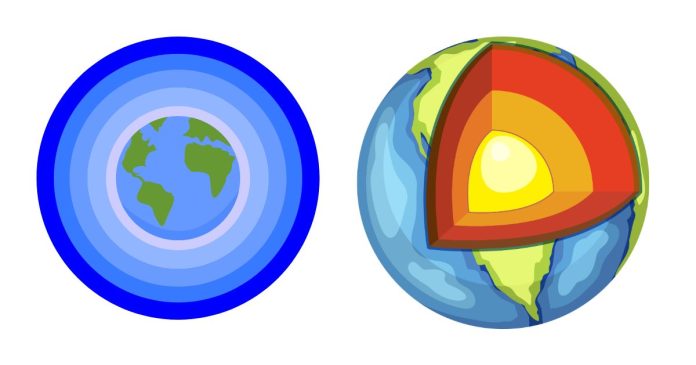The Earth is made up of several distinct layers, each with its own unique characteristics. These layers include the crust, the mantle, the outer core, and the inner core. Among these layers, the one with the lowest density is the crust.
Understanding Earth’s Layers and Density
- Crust: The Earth’s crust is the outermost layer, and it is made up of solid rock. There are two types of crust: the continental crust, which forms the landmasses, and the oceanic crust, which forms the ocean floors. The average density of the crust is about 2.7 to 3.0 g/cm³, making it the least dense layer compared to the other layers beneath it.
- Mantle: Beneath the crust lies the mantle, which extends to about 2,900 kilometers below the Earth’s surface. The mantle is composed of silicate rocks rich in magnesium and iron, and its density ranges from about 3.3 to 5.6 g/cm³. The mantle is denser than the crust due to its composition and depth.
- Outer Core: The outer core is a liquid layer made primarily of iron and nickel. Its density ranges from 9.9 to 12.2 g/cm³, significantly higher than that of the crust and mantle.
- Inner Core: The innermost layer of the Earth, the inner core, is a solid sphere made mostly of iron and nickel. Its density is the highest of all the layers, ranging from 12.8 to 13.1 g/cm³.
Why Does the Crust Have the Lowest Density?
The Earth’s crust has a lower density primarily due to its composition. It is made up of lighter elements such as silicon, oxygen, aluminum, and other materials that are less dense than the heavier elements like iron and nickel found in the core. Additionally, the crust is solid and relatively thin compared to the deeper, more dense layers beneath it.
In summary, the crust is the layer of the Earth with the lowest density. Understanding the density of each Earth layer is important for geologists and scientists, as it helps explain various geological processes, including plate tectonics, the formation of mountains, and the behavior of seismic waves.


